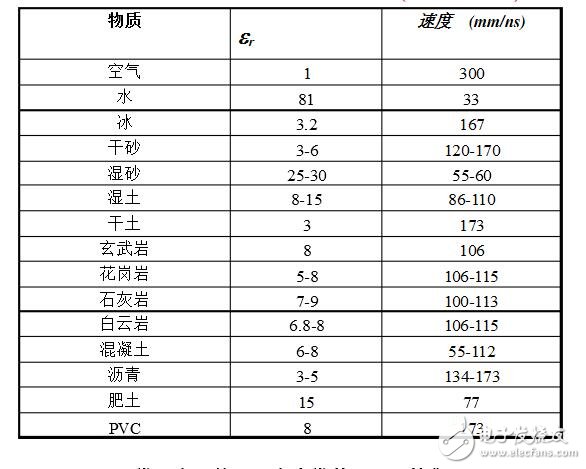This article provides you with the dielectric constant value of air, the dielectric constant table of common substances.
What is the dielectric constant of air?
The relative dielectric constant of air is 1, dry air is a good dielectric and is used in variable capacitors as well as certain types of transmission lines.
The smallest, generally approximate, is the dielectric constant of the vacuum, with an approximation of 1, and others are greater than one.
What is the dielectric constant and what is the dielectric constant unit?
Dielectric constant (also known as permittivity), expressed as ε, ε = εr * ε0, ε0 is the vacuum absolute dielectric constant, ε0 = 8.85 * 10 ^ (-12) F / m. It should be emphasized that the dielectric constant value of a material is closely related to the frequency of the test.
When a capacitor plate is filled with a substance having a dielectric constant of ε, the capacitance becomes εr times larger. The dielectric has properties that make the space larger or smaller than the actual size. For example, when a dielectric material is placed between two charges, it reduces the force acting between them as if they were moved away.
As electromagnetic waves pass through the dielectric, the speed of the waves is reduced and there are shorter wavelengths.
The polarity of the polymer material can be discriminated based on the dielectric constant of the substance. Generally, a substance having a relative dielectric constant of more than 3.6 is a polar substance; a substance having a relative dielectric constant of 2.8 to 3.6 is a weakly polar substance; and a relative dielectric constant of less than 2.8 is a nonpolar substance.
The dielectric constant is in F/m.
Dielectric constant values ​​of common substances:

Relative dielectric constant values ​​of common substances and electromagnetic wave propagation speed
Among them, the dielectric constant of air is close to 1, the dielectric constant of most anhydrous substances (such as dry soil and rock), the real part is generally between 1.7-6, and the dielectric constant of water is generally 81. The imaginary part is small and generally negligible.
brightness
LCD is a substance between solid and liquid. It can't emit light by itself, so it needs additional light source. Therefore, the number of lamps is related to the brightness of the Liquid Crystal Display. The earliest liquid crystal displays had only two upper and lower tubes, the lowest of the popular type was four lamps, and the high-end one was six lamps. The four-lamp design is divided into three types of placement: one is that there is a lamp on each of the four sides, but the disadvantage is that there will be dark shadows in the middle. The solution is to arrange the four lamps from top to bottom. The last one is the "U"-shaped placement form, which is actually two lamp tubes produced by two lamps in disguise. The six-lamp design actually uses three lamps. The manufacturer bends all three lamps into a "U" shape, and then places them in parallel to achieve the effect of six lamps.
Tip: Brightness is also a more important indicator. The brighter the LCD, the brighter the LCD, it will stand out from a row of LCD walls. The highlight technology we often see in CRT (ViewSonic is called highlight, Philips is called display Bright, BenQ is called Rui Cai) is to increase the current of the shadow mask tube to bombard the phosphor to produce a brighter effect. Such a technology is generally traded at the expense of image quality and the life of the display. All use this The products of this kind of technology are all bright in the default state, you always have to press a button to implement, press 3X bright to play the game; press again to turn to 5X bright to watch the video disc, a closer look is blurred, you need to watch The text has to be honestly returned to the normal text mode. This design actually prevents you from frequently highlighting. The principle of LCD display brightness is different from that of CRT. They are realized by the brightness of the backlight tube behind the panel. Therefore, the lamp has to be designed more so that the light will be uniform. In the early days when selling LCDs, it was a great thing to tell others that there were three LCDs. But at that time, Chi Mei CRV came up with a six-lamp technology. In fact, the three tubes were bent into a "U" shape. The so-called six; such a six-lamp design, plus the strong luminescence of the lamp itself, the panel is very bright, such a representative work is represented by VA712 in ViewSonic; but all bright panels will have a fatal injury , The screen will leak light, this term is rarely mentioned by ordinary people, the editor personally thinks it is very important, light leakage means that under a completely black screen, the liquid crystal is not black, but whitish and gray. Therefore, a good LCD should not emphasize brightness blindly, but more emphasis on contrast. ViewSonic's VP and VG series are products that do not emphasize brightness but contrast!
Lcd Display,LCD Screen,Lcd Tft Display Screen,4 Inch Mipi Lcd Screen,Square Tft Lcd Display
ESEN Optoelectronics Technology Co., Ltd, , https://www.esenoptoelectronics.com